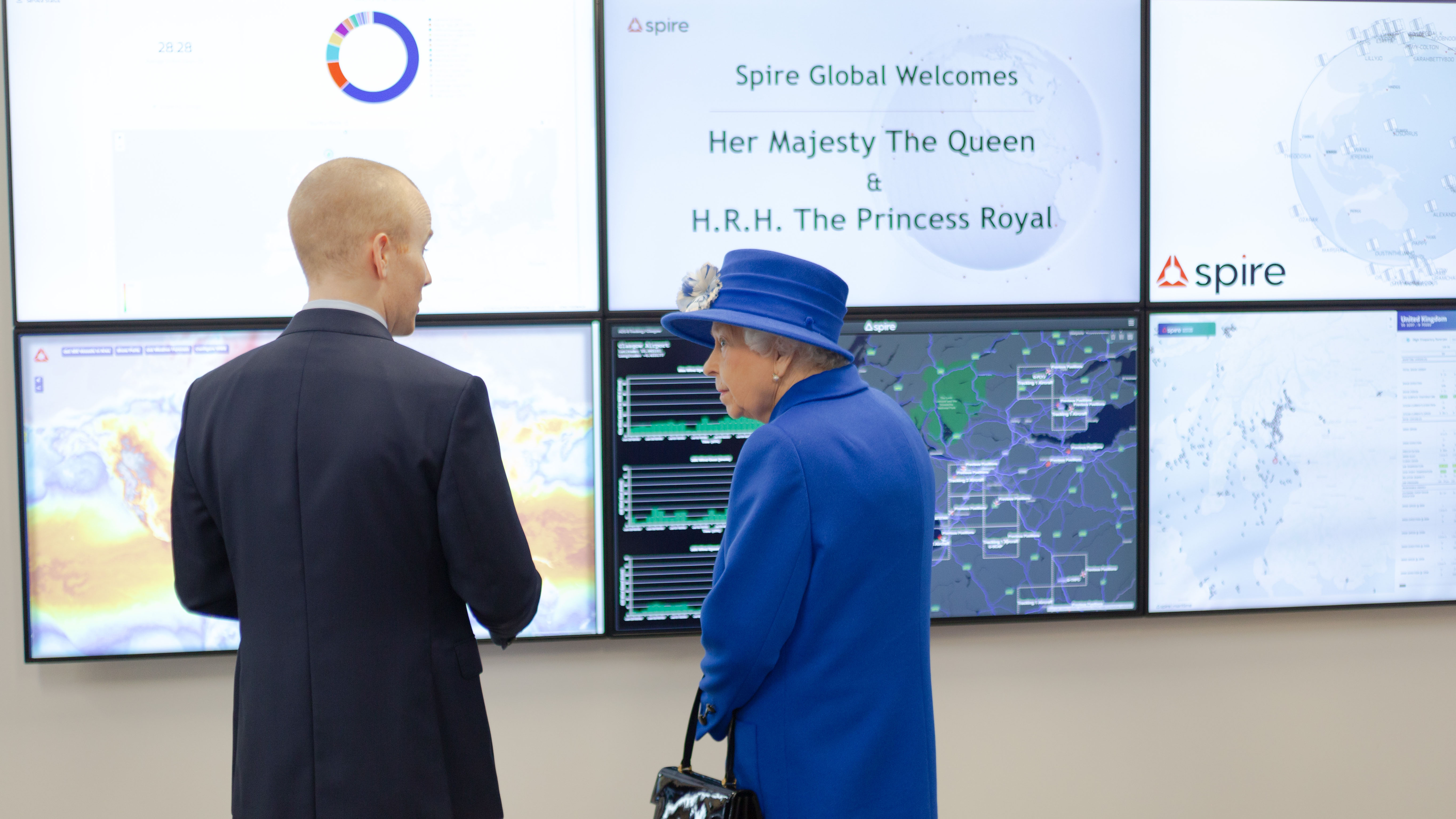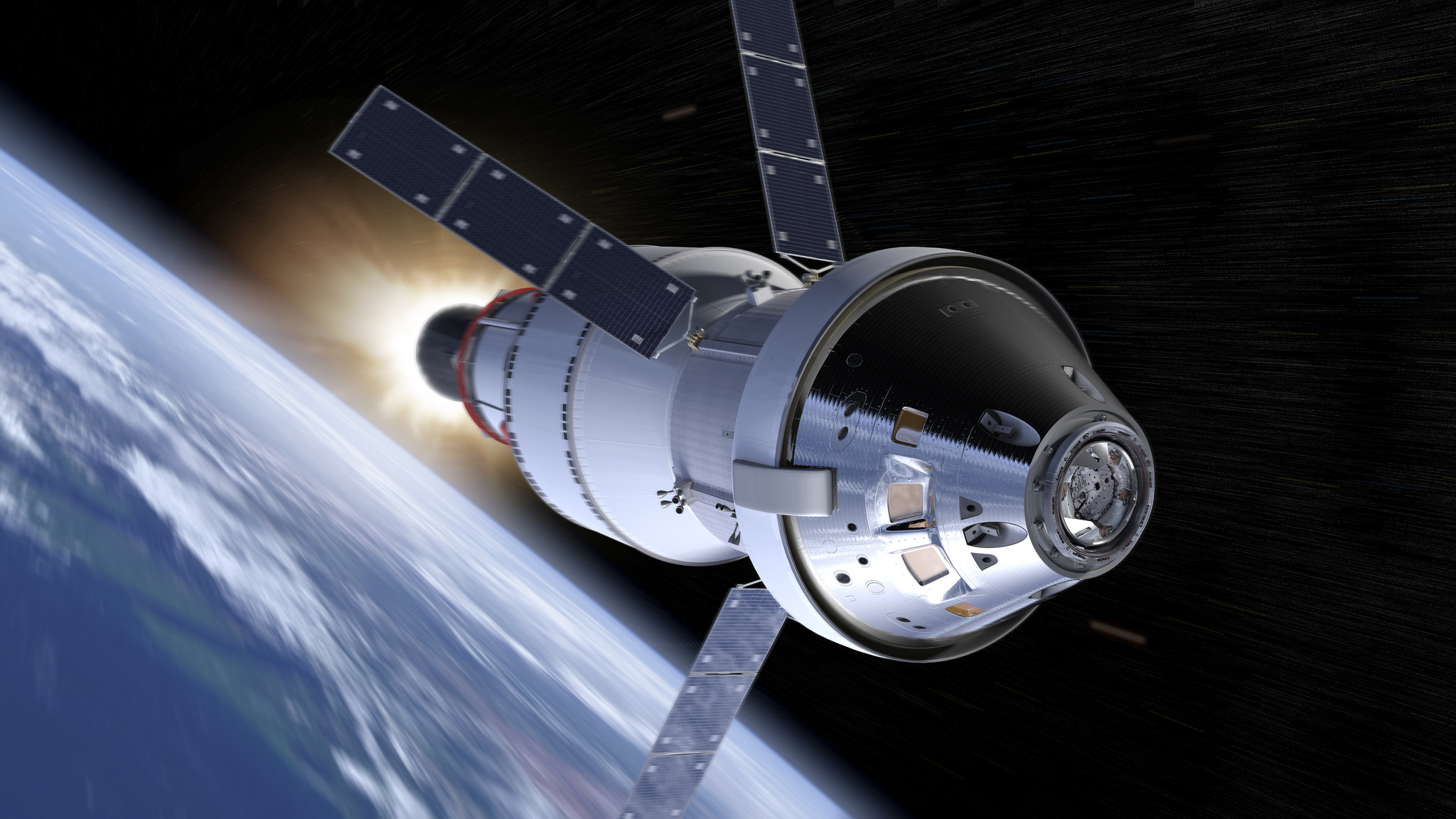Queen Elizabeth II reviews Spire's Earth-observing satellites in Glasgow (photos)
The U.K. monarch got to see how satellites are being made.

Queen Elizabeth II got a first-hand look at the benefits of satellite data in the battle against climate change during a visit to the Glasgow home of the Earth imagery company Spire this week.
The visit, which took place during a string of engagements in Scotland by the Queen, saw the monarch accompanied by her daughter Princess Anne, according to a statement released by Spire. The two spoke to Spire's vice president of engineering and space services Joel Spark, to learn how data from Spire's constellation of more than 110 satellites can help governments and businesses tackle some major challenges of today.
"It was an honor to welcome Her Majesty and Her Royal Highness, where we were able to demonstrate the benefits of our technology and how these cutting-edge capabilities are used to better inform our understanding of the world," Spark said in the statement. "At a critical time for our planet, continuous technological advancements are needed to tackle the impending threats posed by climate change."
Related: NASA to design 'Earth System Observatory' in national push against climate change
The Queen and Princess Royal also toured Spire's Glasgow facility for satellite manufacturing. Photos of the trip show Queen Elizabeth II examining one of Spire's satellites up close as it was presented in a glass case.
The Queen's Spire trip is hardly her first brush with space exploration. The monarch recalled the impact of NASA's Apollo 11 moon landing in her 2019 Christmas message, and she's sent messages to astronauts in space (British and Canadian). She's also toured NASA's Goddard Space Flight Center in Maryland and spoken with astronauts on the International Space Station from the agency's Mission Control room at the Johnson Space Center in Houston.
Spire, headquartered in San Francisco, opened its Glasgow base in 2015 and has recently announced plans to move from its existing 11,000-square-foot premises to a larger 29,500-square-foot site also located in Glasgow's Skypark, according to the statement.
Breaking space news, the latest updates on rocket launches, skywatching events and more!
The U.K. government has been investing heavily into developing the space industry in Scotland, aiming to increase its worth to $5.5 billion (£4 billion) by 2030. According to Scottish Development International, Glasgow manufactures more satellites than any other place in the world outside of the United States. Companies including cubesat maker ACC Clyde Space and Alba Orbital have their base in the city. Scotland also plays an important role in the U.K.’s ambitions to launch satellites into orbit from domestic soil with sites in the north in Sutherland and the Shetland Islands hoping to see rockets fly from 2022.
Follow Tereza Pultarova on Twitter @TerezaPultarova. Follow us on Twitter @Spacedotcom and on Facebook.

Tereza is a London-based science and technology journalist, aspiring fiction writer and amateur gymnast. She worked as a reporter at the Engineering and Technology magazine, freelanced for a range of publications including Live Science, Space.com, Professional Engineering, Via Satellite and Space News and served as a maternity cover science editor at the European Space Agency.

